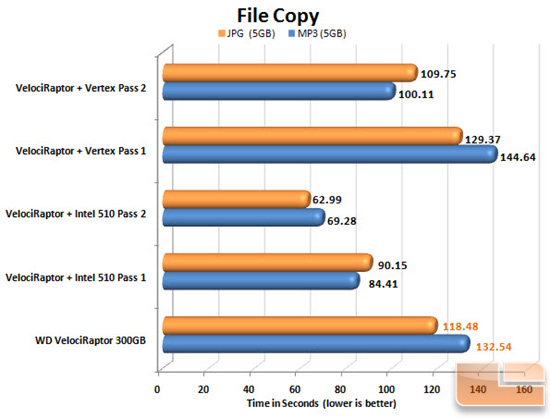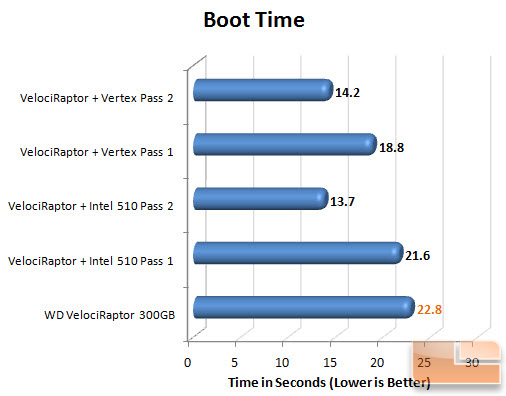Intel Z68 Chipset & Smart Response Technology
Real World Tests
One of the tests we do on all SSD’s is a file copy time test and this makes a very good test to see the impact of the Smart Response Technology as well. As we know, one of the most common operations performed on a PC is moving/copying files. Using a free application called Teracopy, we copied large numbers of two file types from one folder to another on the same drive. Teracopy allows us to objectively measure the time of transfer and using the same drive prevents other devices from tainting the outcome. The operation requires the drive to perform both sustained read and writes simultaneously. The first set of files is a 5GB collection of JPG’s of variable size and compression levels with a few movie (.MOV) files thrown in for good measure since most cameras now take video as well as stills.
Filce Copy Tests – Teracopy

Install Results: While the Intel 510 drive showed improvements after both runs, the Vertex regressed a bit on the first run before showing modest improvements after the second run. No matter how many times this was repeated after the second run, the scores remained consistent. The Intel SSD improved the time of transfer by just over one full minute!
One of the nicest things about running an SSD is the decrease in the time it takes to boot to windows. We booted to the disk boot menu in the UEFI BIOS to begin. As soon as the drive was clicked to start, the stopwatch was started and stopped when the desktop loaded with the cursor changing from the “busy” cursor to the regular pointer.

Install Results: Small gains after the first reboot but then the time drops by roughly 60% for both drive scenarios. These boot times are on par with systems running an SSD as the main OS drive!

Comments are closed.